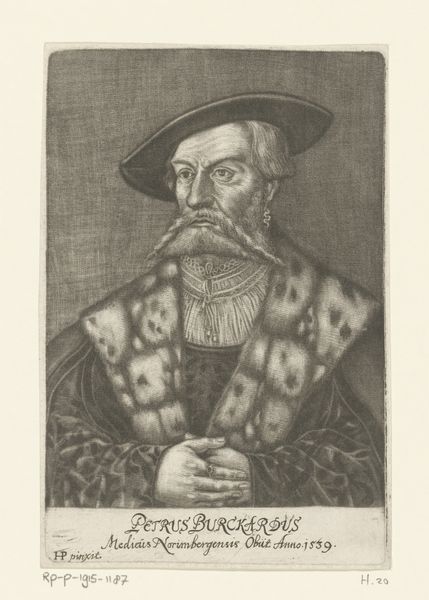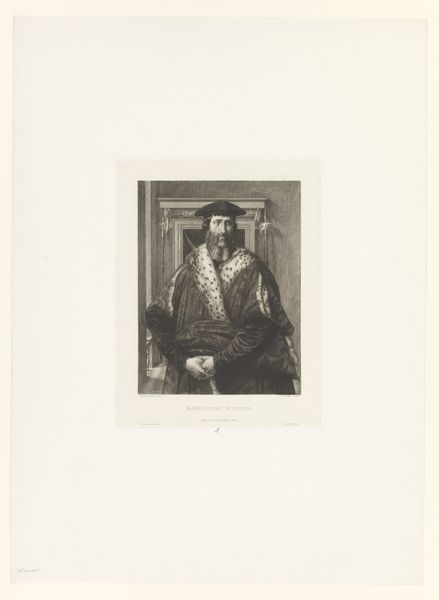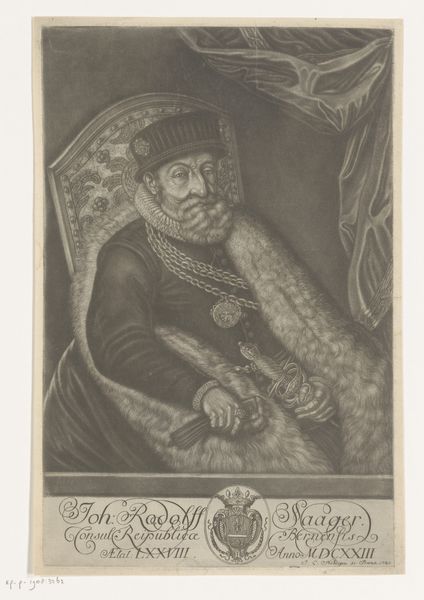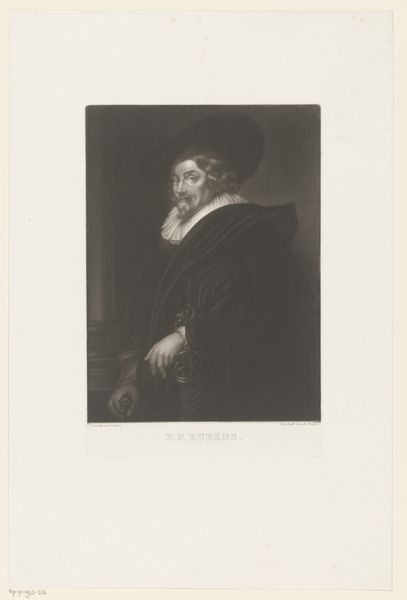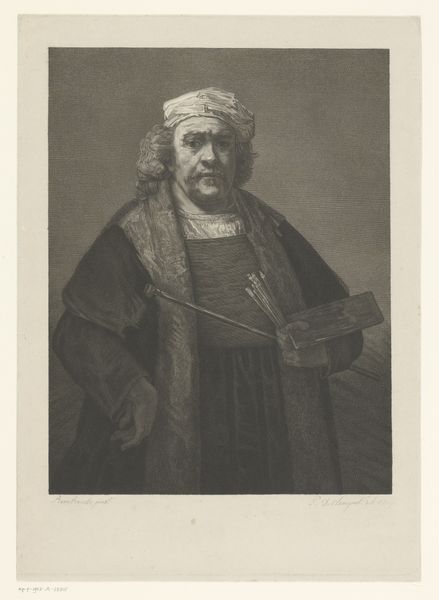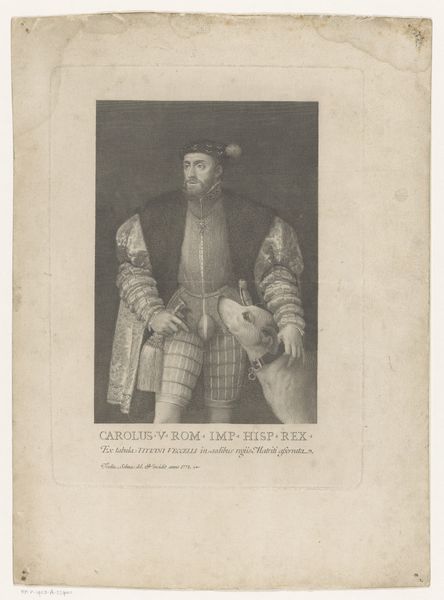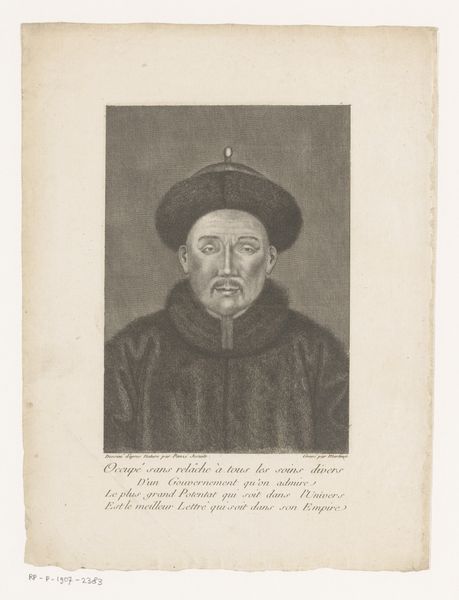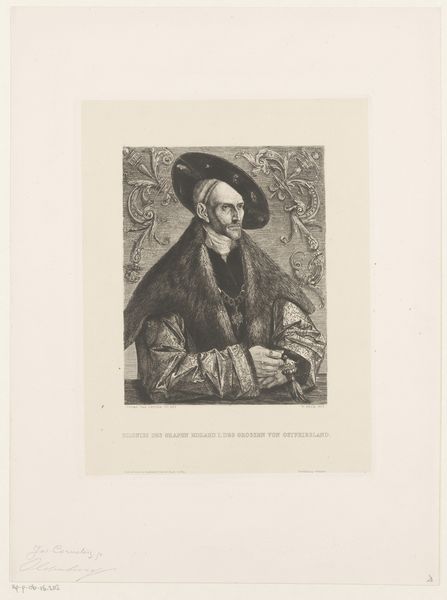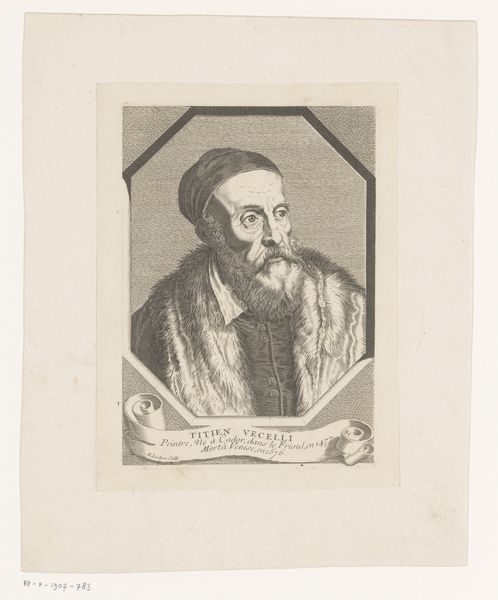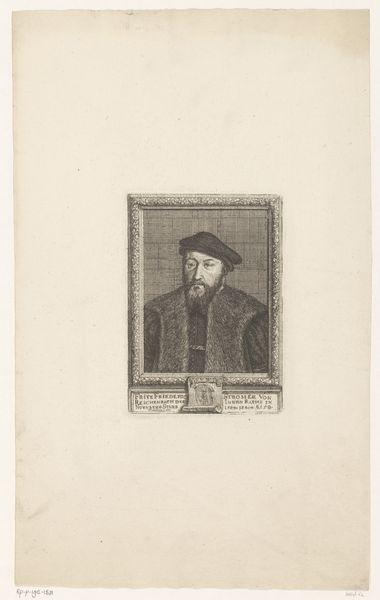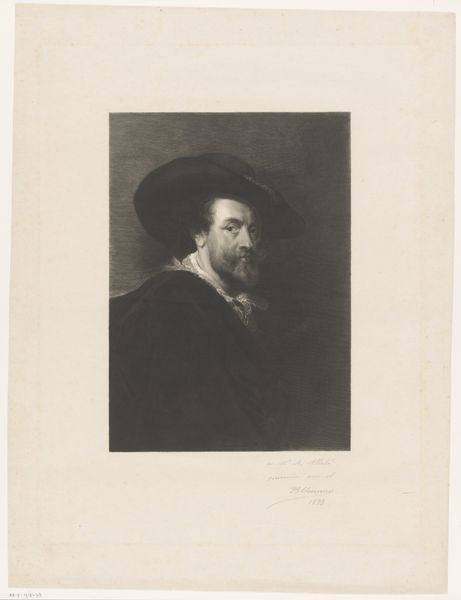
print, engraving
#
portrait
#
pencil drawn
# print
#
pencil sketch
#
pencil drawing
#
pencil work
#
history-painting
#
academic-art
#
engraving
#
realism
Dimensions: height 269 mm, width 202 mm
Copyright: Rijks Museum: Open Domain
Curator: Before us, we have an engraving entitled "Portret van Charles de Solier, comte de Morrette" believed to be created between 1833 and 1909 by Albrecht Schultheiss. Editor: It's quite striking. There's a real sense of gravitas conveyed, even through the fine lines of the print. I'm immediately drawn to the subject's confident gaze and the almost tangible texture of his fur-lined cloak. Curator: It's interesting you mention texture, because Schultheiss clearly put great effort into replicating the various materials - from the plush fur to the metal of the sword he’s holding. I think it's important to recognize this as a print, however, which would mean it was made as a reproduction to be potentially consumed and disseminated for social or political impact. Editor: Precisely! It's difficult to separate the imagery from its function as a marker of status and authority. How would an image like this circulate and what sort of dialogue could it have facilitated? What choices did Schultheiss make regarding the overall tone and message for different social classes, say nobles, artisans or even women? Curator: Good question. Consider that engraving was a means of image production increasingly intertwined with capitalist production. The scale here is intriguing because we might also question its status between original artwork or commodity given the development of art markets in the nineteenth century and who might want to consume it and why. Editor: And this makes me think about the art market then, how did class and institutional power like The Academy in Europe promote this piece? And further, how does it circulate and signify in the present day when exhibited now in a contemporary gallery space? Does it transform it somehow or reify the subject and artist? Curator: Exactly! We cannot underestimate the influence of artistic style. The detailed approach and realistic rendering place the work within the traditions of academic art emphasizing both artistic skill and established conventions in its creation. Editor: Indeed. The choice of portraying Charles de Solier in such formal attire and with such detail in his adornments, really cements his importance within the aristocratic sphere. It makes me contemplate the way such portraits worked within the political theater of the time. It gives insight into that society, really. Curator: It truly is an exercise in both material and political representation. These subtle choices ultimately determine its social reception and function both then and today.
Comments
No comments
Be the first to comment and join the conversation on the ultimate creative platform.
